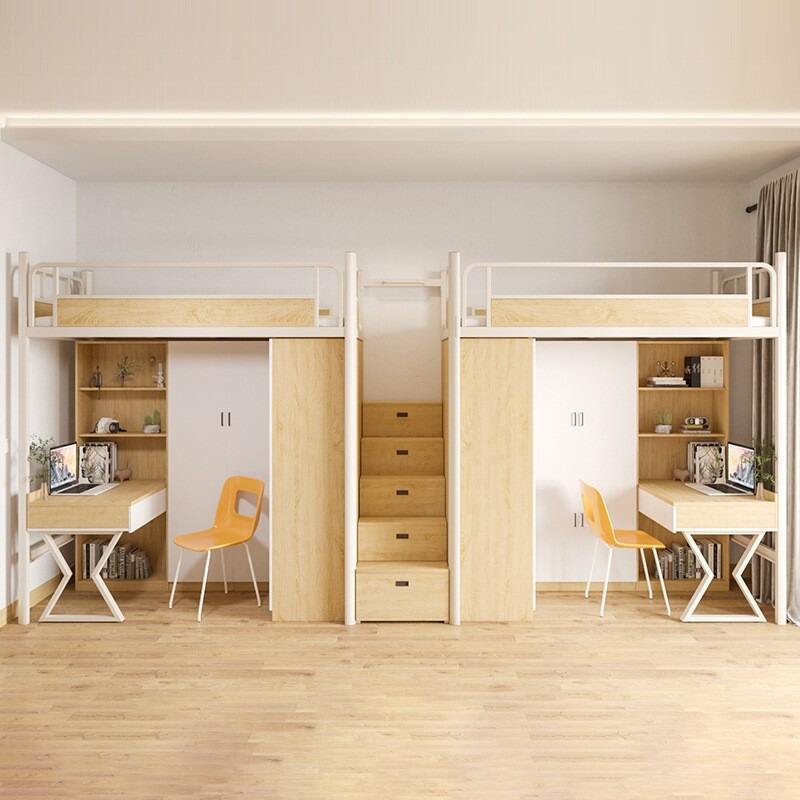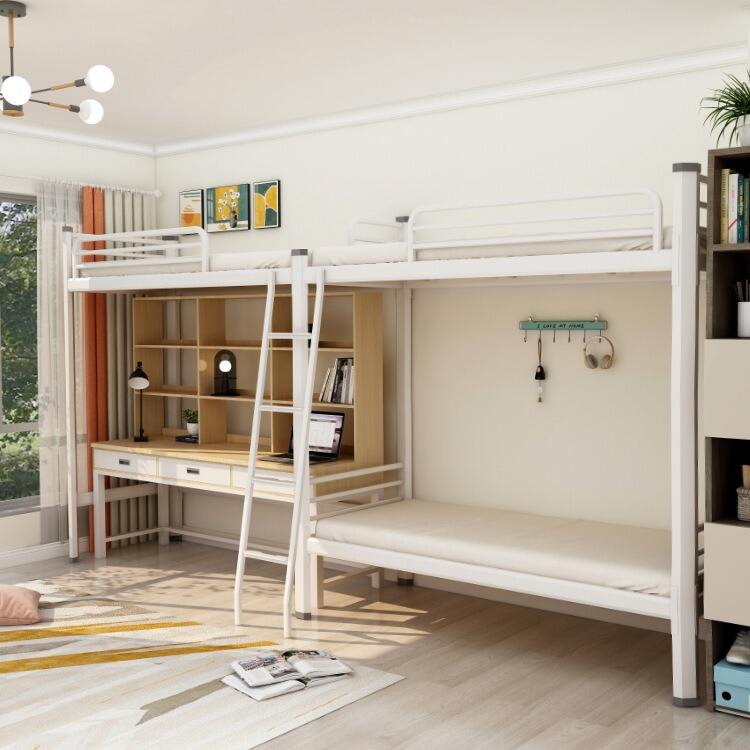How to Choose the Best Dormitory Bed for Comfort and Space Efficiency
Dorm rooms are notoriously small, but a good dormitory bed can make all the difference—turning a cramped space into a cozy spot for sleeping, studying, and relaxing. The best dormitory bed balances comfort (so you get enough rest) and space efficiency (so you have room for books, clothes, and a desk). Let’s break down how to pick the perfect one.
1. Start with the Right Size
Dorm rooms have limited space, so the dormitory bed size matters more than you think. Most dorms have standard dimensions, but measuring first avoids mistakes.
- Standard dormitory bed size: In many places, Twin XL (39 inches wide, 80 inches long) is the norm. It’s longer than a regular Twin (75 inches), which fits taller students. Check your dorm’s guidelines—some small dorms use regular Twin beds.
- Measure your space: Even if the dorm says “Twin XL,” measure the area. Leave at least 2–3 feet (60–90 cm) around the bed for walking, opening closet doors, or placing a desk. A dormitory bed that’s too big will make the room feel like a closet.
- Avoid oversize beds: King or Queen beds are out of the question. Stick to single sizes—they’re designed for dorms and leave room for other essentials.
2. Choose a Dormitory Bed Type for Space Efficiency
The type of dormitory bed you pick can double your usable space. Here are the best options for small dorms:
- Loft dormitory bed: This bed raises high off the floor, with space underneath for a desk, dresser, or seating. It’s a game-changer for tiny rooms—you can fit a study area under the bed instead of next to it. Look for models with guardrails (safety first!) and a sturdy ladder.
- Bunk dormitory bed: Great for shared dorms. Two beds stack vertically, saving floor space for two people. Opt for a bunk bed with a desk under the bottom bunk for extra functionality.
- Platform dormitory bed: A low bed with a solid base (no box spring needed). Many have built-in drawers under the mattress—perfect for storing clothes, shoes, or textbooks. No more clutter on the floor!
- Fold-down dormitory bed: Ideal for ultra-small dorms. The bed folds up against the wall when not in use, turning the space into a study area or lounge. It’s tricky to find, but worth it for maximum flexibility.
Pro tip: Loft and platform beds are the most popular for single dorms—they blend comfort and space-saving perfectly.
3. Prioritize Comfort for Better Sleep
A dormitory bed isn’t just a place to crash—it needs to support good sleep (essential for studying!). Focus on these comfort features:
- Mattress quality: Most dorm beds come with thin, hard mattresses. Upgrade to a 6–8 inch thick mattress (memory foam or hybrid) for better support. Look for one with a removable, washable cover—spills happen!
- Bed frame stability: A wobbly dormitory bed will creak all night, keeping you (and your roommate) awake. Metal frames are sturdier than wooden ones. Check for reinforced joints and thick legs.
- Headboard or back support: A simple headboard (even a padded one) lets you sit up to read or study without leaning against a cold wall. Look for a dormitory bed with a built-in headboard, or add a portable one.
- Breathable materials: Memory foam can get hot, so choose a mattress with cooling gel or breathable fabric. This keeps you comfortable, even on warm nights.
4. Maximize Storage with Smart Design
Small dorms mean every inch counts. A dormitory bed with built-in storage keeps your space tidy:
- Under-bed drawers: Platform beds often have 2–4 large drawers—store sweaters, sheets, or seasonal clothes here. They slide out easily, so you don’t have to dig under the bed.
- Shelf units: Loft beds sometimes have shelves on the ladder or under the desk—perfect for books, a lamp, or snacks.
- Hanging organizers: Attach fabric bins or shoe organizers to the bed frame’s sides. They hold small items (socks, chargers) without taking up floor space.
- Integrated desk: Some loft beds have a desk built into the under-space, combining your sleep and study areas. It’s like a mini studio apartment!

5. Check for Easy Assembly and Durability
You’ll likely need to set up the dormitory bed yourself (or with friends). Look for these features:
- Simple assembly: Choose a bed with clear instructions and few parts. Avoid ones that require power tools—basic hand tools (screwdriver, wrench) should be enough.
- Lightweight but strong: Metal frames are lighter than wood, making them easier to move (important for dorm move-in days). They’re also rust-resistant, so they’ll last all semester.
- Warranty: A 1–2 year warranty means the company stands behind the bed’s quality. It’s a safety net if a part breaks.
FAQ
What’s the standard dormitory bed size?
Most dorms use Twin XL (39x80 inches / 99x203 cm), which is longer than a regular Twin. Check your dorm’s website for exact dimensions.
Can I use a regular mattress on a dormitory bed?
Yes, as long as it fits the bed frame. A Twin XL mattress works for standard dorm beds. Avoid thicker than 8 inches—they might not fit under loft bed ceilings.
How do I make a dormitory bed more comfortable?
Add a mattress topper (memory foam or down alternative), soft sheets, and a cozy comforter. A mattress pad also protects against stains.
Is a loft dormitory bed safe?
Yes, if it has guardrails (at least 5 inches high) and a sturdy ladder. Never jump off a loft bed—use the ladder to avoid injury.
How can I use the space under a dormitory bed?
For non-platform beds, use plastic bins (with wheels) or storage bags to hold clothes. Add a tension rod and curtain to hide the clutter for a cleaner look.
Do I need a box spring for a dormitory bed?
No—most dorm beds (especially platform or metal frame ones) don’t need a box spring. The mattress sits directly on the frame.
What’s the best dormitory bed for a shared room?
A bunk bed saves space for two people. Look for one with a desk under the bottom bunk—each person gets a sleep and study spot.
Table of Contents
- How to Choose the Best Dormitory Bed for Comfort and Space Efficiency
- 1. Start with the Right Size
- 2. Choose a Dormitory Bed Type for Space Efficiency
- 3. Prioritize Comfort for Better Sleep
- 4. Maximize Storage with Smart Design
- 5. Check for Easy Assembly and Durability
-
FAQ
- What’s the standard dormitory bed size?
- Can I use a regular mattress on a dormitory bed?
- How do I make a dormitory bed more comfortable?
- Is a loft dormitory bed safe?
- How can I use the space under a dormitory bed?
- Do I need a box spring for a dormitory bed?
- What’s the best dormitory bed for a shared room?


